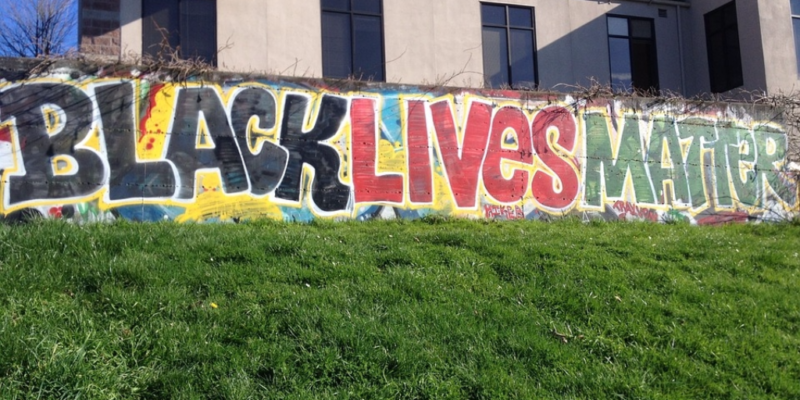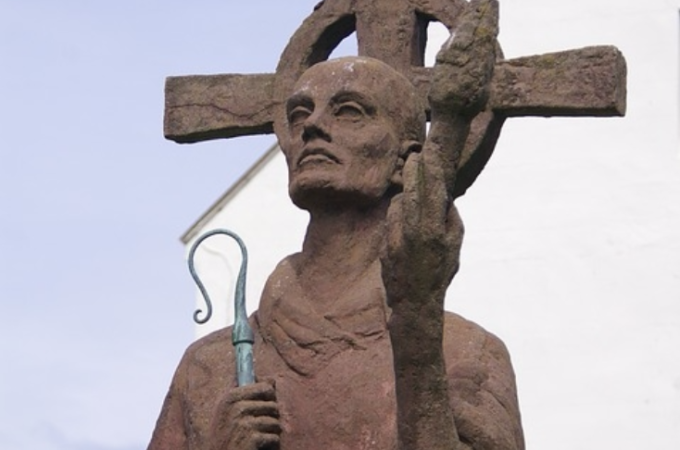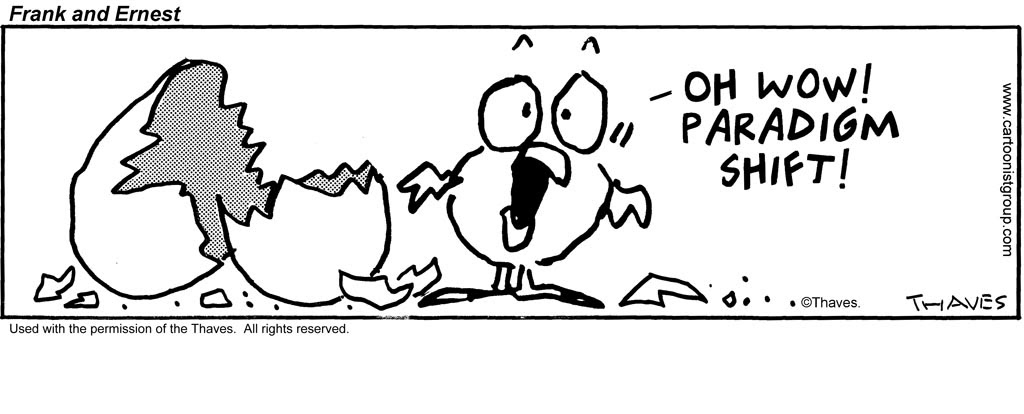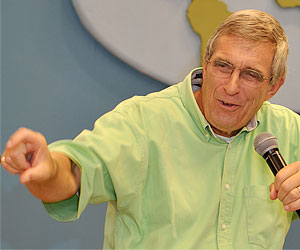In this series, we are exploring the cultural roots of the escalating campus rage in America. New York University professor Jonathan Haidt recently described it as “a new religion.” I find it extremely clarifying to recognize this rage as a religion. It isn’t simply “atheism” or “secularism,” but really a toxic combination of postmodernism, neo-Marxism, and Nietzschean will to power.
And this new religion is aggressively expansionist. While its origins lie in the West, it isn’t content to stay there. It has a global vision, a missionary zeal, and a missionary strategy.
In upcoming posts, we’ll look at the tactics it uses to spread around the world, and to penetrate and transform culture. While the four “core doctrines” of the new faith are sourced in postmodernism and neo-Marxism, its missionary tactics are deeply influenced by Nietzschean thought. The Third Reich in Germany was also infamous for its Nietzschean tactics of cultural and global domination. This isn’t ancient history, and we are foolish if we think a similarly dangerous ideology can’t emerge here, particularly if it has the same philosophical roots.
The End Goal
Religions that are both global and expansionist (read Islam and Christianity) have a future vision. Islam’s goal is the submission of all peoples and nations under Sharia, or Islamic law. Islam literally means “submission” to Allah and his law. The vision of Christianity is the fulfillment of the Great Commission, the return of Christ the King, and the consummation of his Kingdom in a renewed heaven and earth.
This new religion seems to be driven more by what it is against—the Judeo-Christian beliefs at the root of Western civilization—than by a clear vision of what it is for. There seems to be a confidence that once the Judeo-Christian foundations of Western Civilization are utterly destroyed, whatever comes next will be better.
 Yet two aspects of a future vision seem to emerge when studying this new belief system. The first is a vision of a world of radical social equality, no different than the vision that has fired true believers in Marxism from its beginnings. The word “equality” has taken on an almost sacred connotation for believers in the new religion. C.S. Lewis describes this vision in The Screwtape Letters:
Yet two aspects of a future vision seem to emerge when studying this new belief system. The first is a vision of a world of radical social equality, no different than the vision that has fired true believers in Marxism from its beginnings. The word “equality” has taken on an almost sacred connotation for believers in the new religion. C.S. Lewis describes this vision in The Screwtape Letters:
Allow no preeminence among your subjects. Let no man live who is wiser or better or more famous or even handsomer than the mass. Cut them all down to a level: all slaves, all ciphers, and all nobodies. All equals.
But an even more fundamental dream drives the new religion: a world of complete, unfettered sexual license. For true adherents, the most oppressive legacy of Western civilization is the Judeo-Christian sexual ethic, including the binary nature of male and female, and the natural family. True freedom, true happiness will be realized only when these oppressive ideas are completely discredited and made to be immoral. If I’m homosexual and finally free to marry my partner, or if I’m able to have unlimited sex without concern for marriage or procreation (thanks to abortion and birth control), or if I’m transgender and finally free to transition by means of surgery and hormones with the blessing and affirmation of the broader culture, I’ll have arrived in the Promised Land. The new religion and the sexual revolution are deeply intertwined. It is this future hope of sexual antinomianism that gives the new religion an uncanny semblance to ancient paganism. These are the big goals.
To realize this vision the new religion uses Nietzschean tactics. Nietzsche railed against what he described as a weak, servile Christian morality. Indeed, the tactics employed by adherents of the new religion are void of any trace of a Judeo-Christian ethic. Here you find no toleration, no grace, no forgiveness. Here there is no commitment to honesty or truth-telling, no “first get the log out of your own eye” introspection. Frighteningly, the new religion achieves its aims through raw power, intimidation, coercion, threats and even violence. The ends justify the means. No tactic, however vicious, is off the table.
Employ Narratives
For its adherents, objective truth doesn’t exist. There is no “metanarrative,” only socially constructed narratives relative to a particular community. Because of this, these proponents feel no qualms about crafting highly distorted and ultimately false narratives to help them achieve their goals. This “narrative creation” ploy has been put into the service of furthering the ends of the new religion.
I’ve written extensively on this subject already. In brief, narratives are powerful because, as human beings, we are driven by stories that provide an overarching framework from which we form opinions and make decisions about particular matters. God made us this way. We make sense of the world within the framework of a larger whole. Powerful narratives, with their basic plotline, heroes and villains, have a gut-level appeal. Those in positions of power and influence are able to “establish the narrative,” to create and promote a particular narrative until it becomes widely accepted.
Exhibit A is the narrative of Western imperalism and American history now established as conventional wisdom in the vast majority of American educational institutions. It goes something like this: Native peoples were living peaceful, happy lives until European Christian civilization with its “guns, germs and steel,” religious warfare, slavery and culture-imposing missionaries colonized, raped and destroyed native peoples and lands. The heroes of the story are those who fight this evil by working to undermine Western civilization and the Judeo-Christian belief system on which it was built.
As with all narratives, an element of truth gives it credibility. But the narrative promoters “cherry pick” facts and evidence that supports their plot line, while ignoring anything that counters it. The problem with such a practice is simple: if you tell only part of a story, you are not telling a true story. You’ve distorted it to the point that it no longer reflects reality. And if you tell a lie long enough, people begin to believe it. This is where narratives become downright dangerous.
 Take, for example, the insidious narrative that America’s police force, on aggregate, is systemically racist and poses the greatest threat to young black men in America today. Activist groups like Black Lives Matter speak hyperbolically about how the police deliberately target black men for death. They look for any instance of racially motivated police violence, and build their narrative around that while willfully ignoring any evidence that would help people see the bigger picture. In many cases, they’ve gone beyond cherry-picking of facts to outright falsehood, as they did with the “hands up, don’t shoot” deception following the 2014 shooting of Michael Brown in Ferguson Missouri.
Take, for example, the insidious narrative that America’s police force, on aggregate, is systemically racist and poses the greatest threat to young black men in America today. Activist groups like Black Lives Matter speak hyperbolically about how the police deliberately target black men for death. They look for any instance of racially motivated police violence, and build their narrative around that while willfully ignoring any evidence that would help people see the bigger picture. In many cases, they’ve gone beyond cherry-picking of facts to outright falsehood, as they did with the “hands up, don’t shoot” deception following the 2014 shooting of Michael Brown in Ferguson Missouri.
Readily available data and a plethora of detailed nonpartisan studies show that this narrative is completely false. Futhermore, it has spawned many destructive consequences. It has taken deep root in the black community and has led to widespread (and incredibly well-funded) “protests” that often turn into riots. It has led to subtle and sometimes not so subtle calls for violence against the police. Some have taken up that call. In 2016, Micah Xavier Johnson ambushed a group of police officers in Dallas, Texas, killing five and injuring nine others. Johnson was angry over police shootings of black men and stated that he wanted to kill white people, especially white police officers. He is not alone. The rates of black violence against the police have risen dramatically.
The Hudson Institute’s Heather Mac Donald has spent her career researching America’s criminal justice and policing systems and is alarmed at the grip this false narrative has on the minds of people of the black community. In a recent Prager University video, she nearly screams, “Does the truth matter?” For the perpetuators of this narrative, the answer is clearly, no. What matters is furthering the narrative.
- Scott Allen






